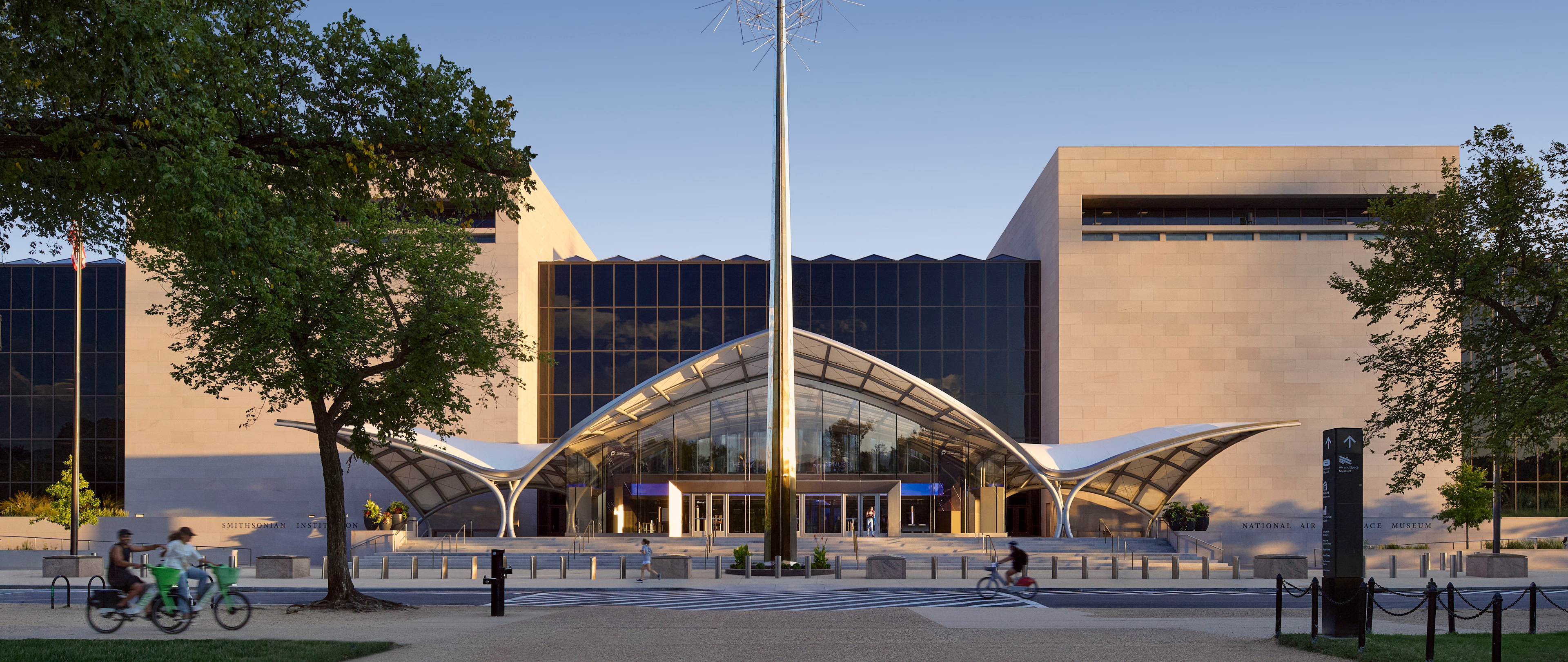
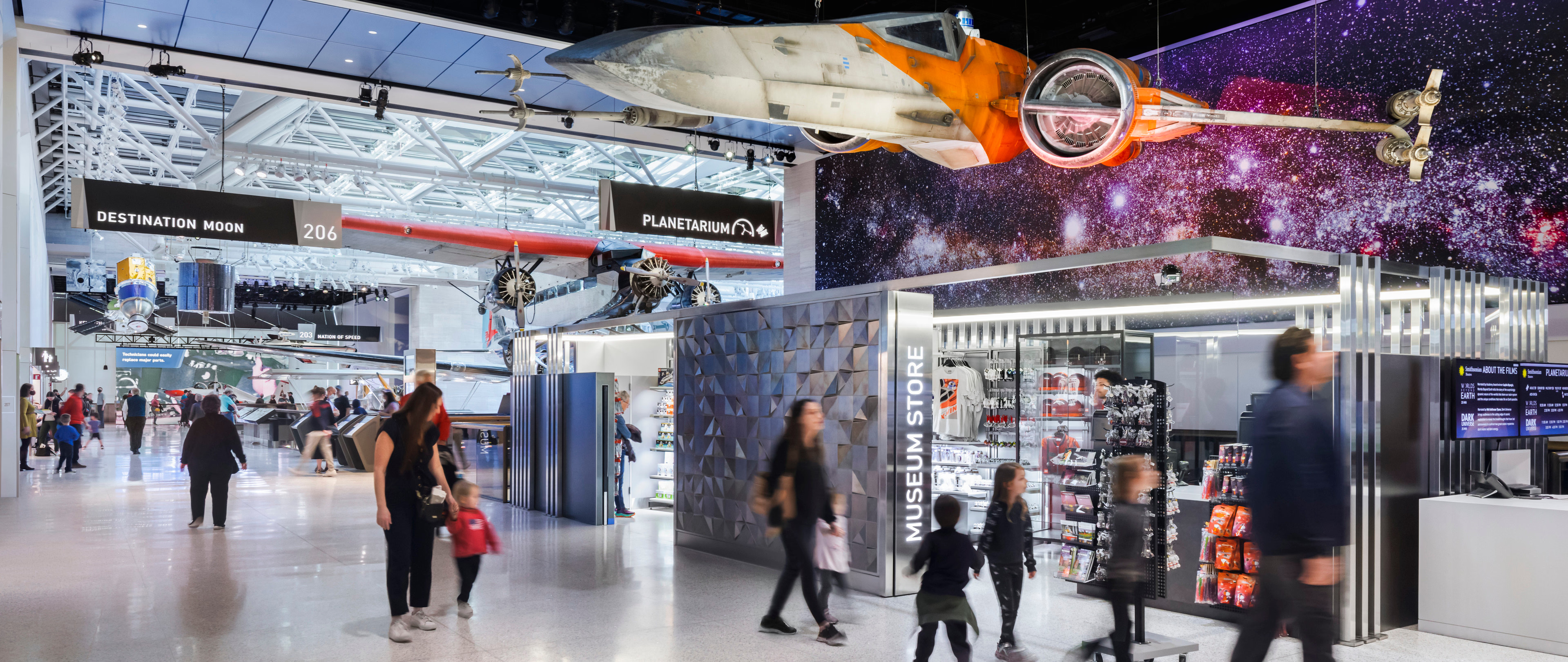
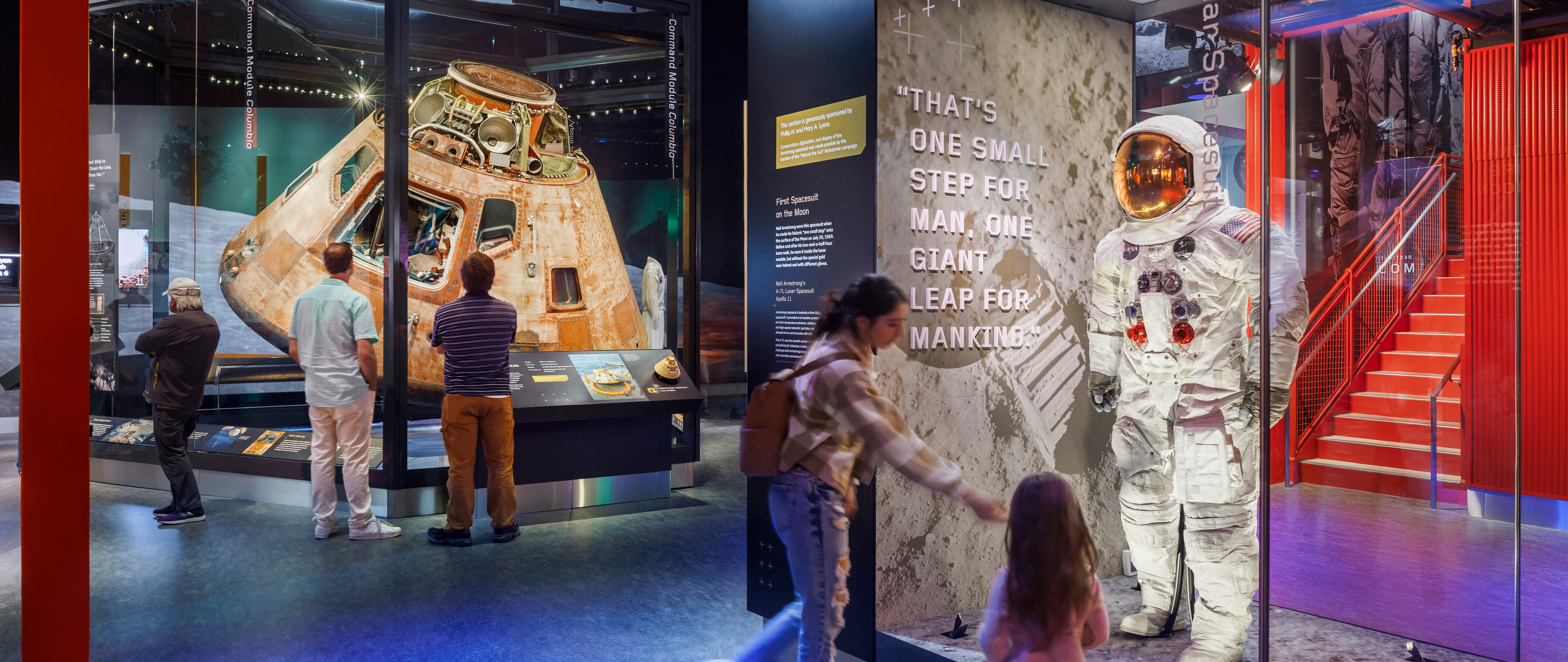
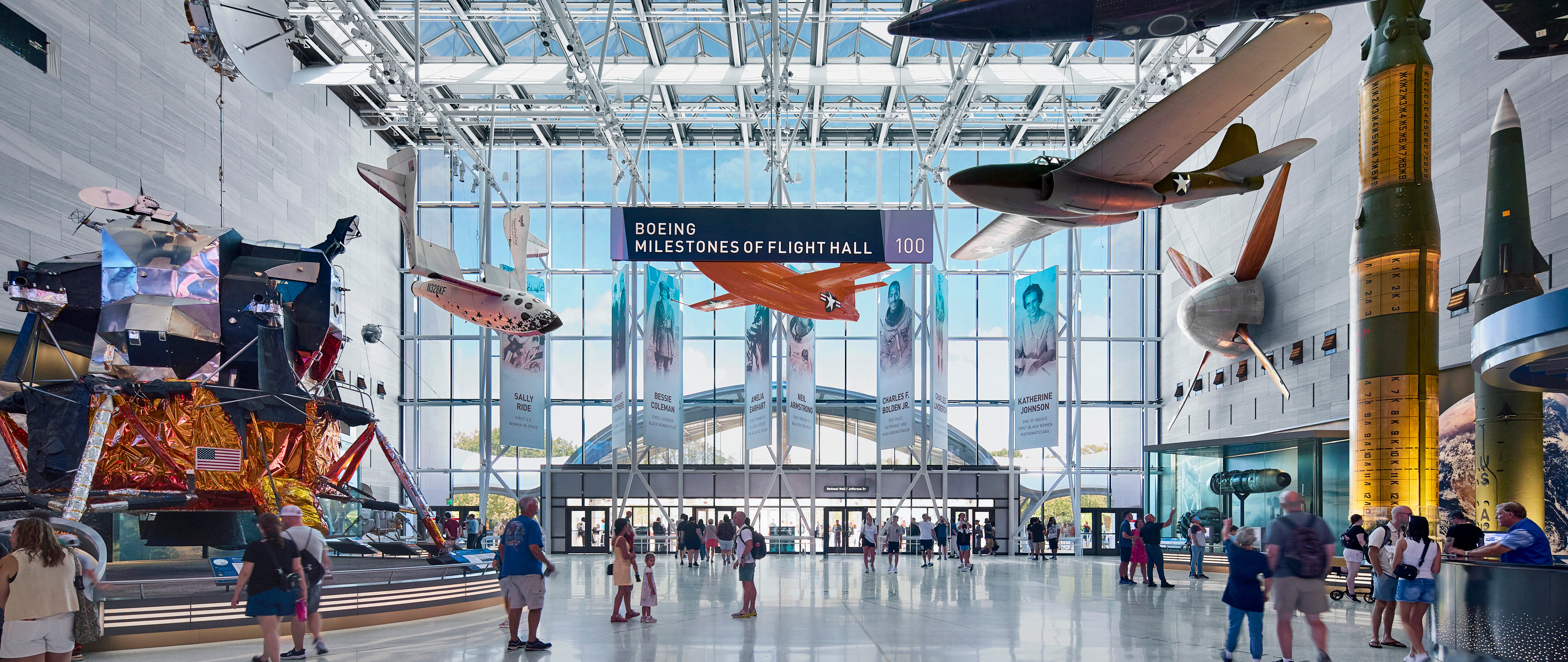

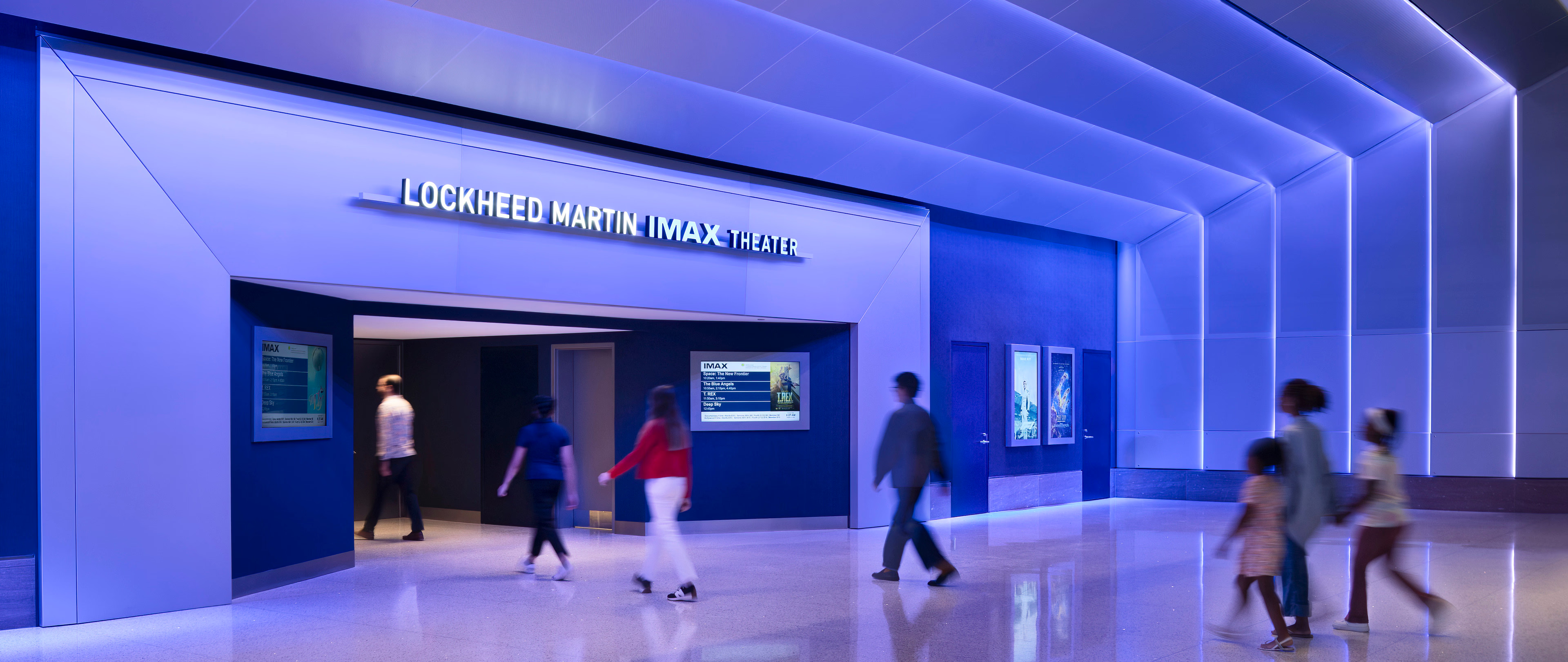
Into the Future
National Air and Space Museum
National Air and Space Museum
Our design for the modernization of this iconic museum creates a high-performance environment to showcase America’s achievements in aviation and spaceflight. One of the world’s most visited museums, the building welcomes several million visitors every year. We are renewing it inside and out to create a more resilient structure and welcoming visitor experience.
The comprehensive renovation integrates an all-new envelope with engineering systems and infrastructure to improve energy efficiency and environmental conditions for both people and artifacts. New visitor-focused spaces, including a bold entry vestibule and lower-level education area called the “Launch Pad," respect the building’s architectural character while enhancing the museum experience.
Through stimulating new exhibition techniques and innovative digital engagement, we will tell exciting and relevant stories in ways that resonate with our modern communication-savvy world.

Renewing an Icon
One of our main goals was to respect and maintain Gyo Obata’s original intent and the museum’s character-defining features as a mid-century design. For major interventions like the complete replacement of the exterior stone cladding, we developed and mocked up several potential solutions to arrive at the best fit.

A New Front Door
An expressive new entry vestibule forms a counterpoint to the rectilinear original structure. Inspired by birds’ wings and early flying machines, the addition provides a climatized queuing and orientation area for visitors waiting to go through security screening.

Optimizing the Environment & Saving Energy
We applied extensive energy and daylight modeling and materials analyses to inform our integrated solutions to improve the building's performance. We worked closely with conservators to determine temperature and humidity settings to optimize museum conditions, which yielded significant energy reductions. The museum's energy costs are projected to drop by half while protecting the artifacts within the large, glazed atria.



